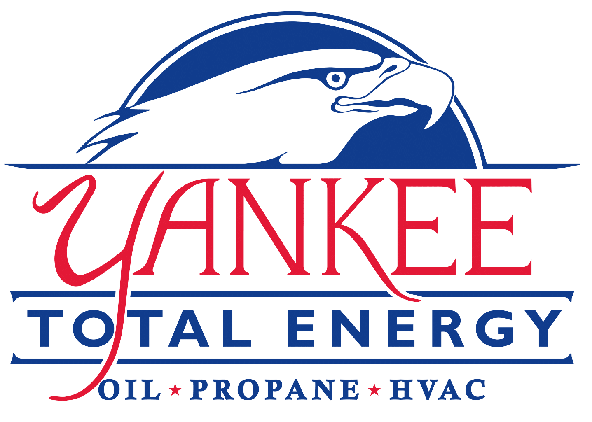When summer heat rolls into Connecticut, the question for many homeowners isn’t whether they need air conditioning—it’s which type of cooling system will keep their home most comfortable. Two of the most common options are ductless mini-split systems and central air conditioning – so ductless mini-splits vs. central air… which is right for you?

Both can deliver cool, refreshing air, but they do so in different ways, with unique benefits and considerations. The right choice for your home depends on factors like your existing infrastructure, your comfort needs, your energy efficiency goals, and your personal preferences for system design and operation.
Yankee Total Energy specializes in helping homeowners select and install the cooling system that’s right for them. Here’s a comprehensive look at how ductless mini-splits and central air systems compare.
How Ductless Mini-Splits Work
A ductless mini-split system consists of an outdoor compressor unit connected to one or more indoor air-handling units mounted directly in the rooms they serve. Refrigerant lines run between the indoor and outdoor components, moving heat out of your home in summer and, if the unit is a heat pump model, bringing heat in during cooler weather.
Because each indoor unit operates independently, mini-splits allow for room-by-room temperature control, or zoning. This flexibility can be a significant advantage in homes with varying comfort needs throughout the day.
How Central Air Works
Central air conditioning uses a single, centralized system to cool the entire home. The outdoor condenser connects to an indoor coil, which is typically installed in the air handler or furnace plenum. Cool air is distributed through a network of ducts to vents in each room.
With central air, all rooms are cooled at the same time, and the system is typically controlled by a single thermostat, though modern systems can integrate zoning dampers for more targeted control.
Efficiency Considerations
Energy efficiency plays a major role in long-term operating costs and environmental impact.
Ductless mini-splits are often more efficient than traditional central air systems because there are no ducts to lose cooled air. In some homes, duct losses can account for a significant portion of wasted energy, particularly if ducts run through unconditioned spaces. Mini-splits also allow you to cool only the rooms you’re using, which reduces unnecessary operation.
Central air systems can be highly efficient too, especially when paired with well-designed and well-insulated ductwork. Modern high-SEER central systems offer strong efficiency for whole-home cooling.
Comfort and Control
One of the standout benefits of ductless mini-splits is their zoning capability. Each indoor unit can be set to a different temperature, so you can keep bedrooms cooler at night without overcooling other areas. This flexibility is ideal for homes with varying occupancy patterns or where certain rooms are harder to keep comfortable.
Central air systems offer consistent whole-home cooling and a more uniform temperature across all rooms. For homeowners who value a simple, set-it-and-forget-it system, central air provides reliable, even comfort throughout the house.
Installation Factors
Mini-splits are often easier to install in homes without existing ductwork. Because they require only a small opening for refrigerant lines, installation can be faster and less invasive than adding ducts. They’re an excellent choice for additions, older homes without central air, or spaces where extending ductwork would be impractical.
Central air works best in homes that already have ductwork in place, such as those with forced-air heating systems. In such cases, installation can be straightforward, using the existing ducts to deliver cool air to every room.
Aesthetic Considerations
A ductless mini-split indoor unit is mounted on the wall, ceiling, or floor in the space it serves, and remains visible year-round. While manufacturers have improved the design and slim profile of these units, some homeowners prefer the hidden nature of central air vents.
Central air systems have most components hidden out of sight, with only small registers or grilles visible in each room, making them nearly invisible in day-to-day living spaces.
Maintenance Needs
Both systems require routine maintenance for optimal performance. Mini-splits need their filters cleaned or replaced more frequently—often monthly during peak use—and indoor units should be kept free of dust and debris.
Central air systems require annual professional inspections, coil cleaning, and filter changes, typically every one to three months depending on the type of filter used. Duct cleaning may also be needed periodically to maintain air quality and efficiency.
Lifespan and Durability
A well-maintained ductless mini-split can last 10 to 20 years, while central air systems typically operate effectively for 15 to 20 years. Lifespan depends heavily on regular maintenance, the quality of the installation, and how often the system is used.
Choosing a reputable installer and committing to scheduled service can help maximize the longevity of either system.
Best Applications for Ductless Mini-Splits
- Homes without existing ductwork
- Room additions or renovations
- Spaces with different temperature needs
- Energy-conscious homeowners looking to cool only certain areas at a time
Best Applications for Central Air
- Homes with existing ductwork in good condition
- Homeowners who prefer whole-home cooling with one thermostat
- Families who value consistent, even temperatures throughout the house
Deciding Between the Two
The right choice comes down to your home’s existing infrastructure, your comfort preferences, and how you plan to use the system.
If you already have ductwork and want whole-home cooling with minimal visual impact, central air is likely the best fit. If you’re looking for zoned cooling, flexibility, and energy efficiency—especially in a home without ducts—a ductless mini-split could be the better option.
Many Connecticut homeowners use both, installing a central system for most of the home and adding a ductless mini-split for hard-to-cool spaces like sunrooms or finished attics.
Expert Guidance from Yankee Total Energy
At Yankee Total Energy, we help homeowners choose the right cooling solution for their needs. We install and service both ductless mini-splits and central air systems, and we can provide an honest assessment of what will work best in your space.
From evaluating your home’s layout to recommending energy-efficient models and handling professional installation, our team ensures your comfort through even the hottest Connecticut summers.
